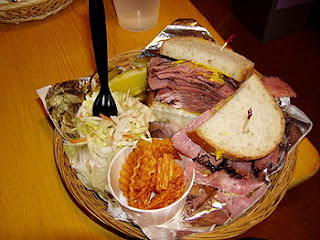Town with 11 Golf Courses Is Sucking California Dry
Welcome to Bermuda Dunes, California, where the average resident consumes more than four times the amount of water as the average Californian.
The state of California is having a bit of a water problem. By “a bit of a water problem,” we mean “a Dust Bowl-like drought,” according to one climatologist. Blame is being tossed in every direction, from agriculture to livestock to weshouldn’t be living in the desert anyway.
But there’s one abuser of this precious natural resource that, if curtailed, shouldprovide an easy fix: non-essential, day-to-day consumption. Unfortunately, history tells us “easy” is probably the one thing that isn’t gonna be.
That’s why the State of California just started a waste-shaming program. A look at the California State Water Board’s most recent conservation report lays out, among other things, the Residential Gallons Per Capita Day (R-RGPCD) for each region from June 2014–February 2015. And, basically, the consumption of water per person is alarming.
Granted, this report was completed before the mandatory 25 percent water reductions signed last week by Governor Jerry Brown, but it also indicates nearly all the regions listed had their own local restrictions in place.
The worst offender?
A private water supplier called the Myoma Dunes Mutual Water Company, who serves a little town named Bermuda Dunes and its surrounding area.
Nestled into the dust bowl that is Southern California’s Inland Empire, the roughly three-square mile hamlet gets its name from the swanky and deeply emerald green Bermuda Dunes Country Club. The Water Board’s report puts the population for the area at 6,159 thirsty souls. So thirsty, in fact, the town’s R-RGPCD actually went up over the duration of the report, from 330 gallons per person to 379. This is markedly higher than the state average of 88.89 per person, and leads the next worst offender, Rancho Santa Fe, over by the San Diego coast, by 34 gallons a head.
So just how the hell is such a tiny desert town guzzling so many gallons?
“The town’s R-RGPCD actuallywent up over the duration of the report, from 330 gallons per person to 379. This is markedly higher than the state average of 88.89 per person.”
Well, it isn’t to quench their thirst. Instead, the answer might lie squarely with the eleven golf courses located within five miles of this once-sandy stretch of the Coachella Valley, lush green tributes to giving zero damns about the environment, rolling hills of grass and trees and man-made lakes and fish ponds, fueled with the rapidly dwindling lifeblood of the Colorado River Hydro Region.
By their own industry’s numbers, golf courses in the United States account for some 2.1 billion gallons of water every day. And while Brown’s 25 percent usage reduction would cripple a lot of the state’s golf courses, California golf industry folks are preparing to ramp up the fight, both by appealing to lawmakers and attempting to find ways to replace turf and conserve.
“There are 866 golf courses in California,” Max Gomberg, a senior scientist at the California State Water Resources Control Board, told Golf magazine in a recent interview. “That’s a lot of water.”
It is a lot of water, especially to a state that is rapidly turning in to a giant man-made sand dune. But it’s also a ridiculous amount of water for a small town to be sucking dry on a sport when the state’s in crisis.
Never mind that the state’s biggest urban centers score exponentially lower—and better—on the R-RGPCD scale. Here they are in order of greatest population: Los Angeles at 69, San Diego at 59, San Jose at 59, and San Francisco at 44. It’s hard to imagine that the difference is made up simply because the good folks of Bermuda Dunes take extra long showers or want to have green lawns—even with an average high temperature of 107 degrees in the summer months.The Daily Beast reached out to the both the Myoma Water Company, who supplies the region, and ten separate golf courses and country clubs in the town for comment. After multiple phone calls and sometimes days left to respond, we were ignored or denied comment by the water company and all but one golf club—Heritage Palms Golf Club, and its general manager Dennis Elam. Elam noted that for his 18-hole golf course, things were getting tight, but not too tight. Yet.
“We’ve been continuously working on conserving and changing over to alternate sources of irrigation water,” he told us by phone. “Our golf course and our common area uses non potable water.”
Non-potable water means you can’t drink it, and it’s not included in the mandatory water restrictions. To get it, they’re tapping into the farmer’s reserves.
“There’s a canal that comes from the Colorado River into the Coachella Valley that was primarily built for agriculture,” Elam noted. “But the CVWD (Coachella Valley Water District) has tapped into it for golf courses to reduce the overdraft on the aquifer.”
As hundreds of thousands of hipsters and bros and party people file into the Coachella Valley for its namesake music festival this weekend, it’s easy to imagine even more of those precious gallons disappearing into the parched earth, as more potential dust storms loom ominously

Comments